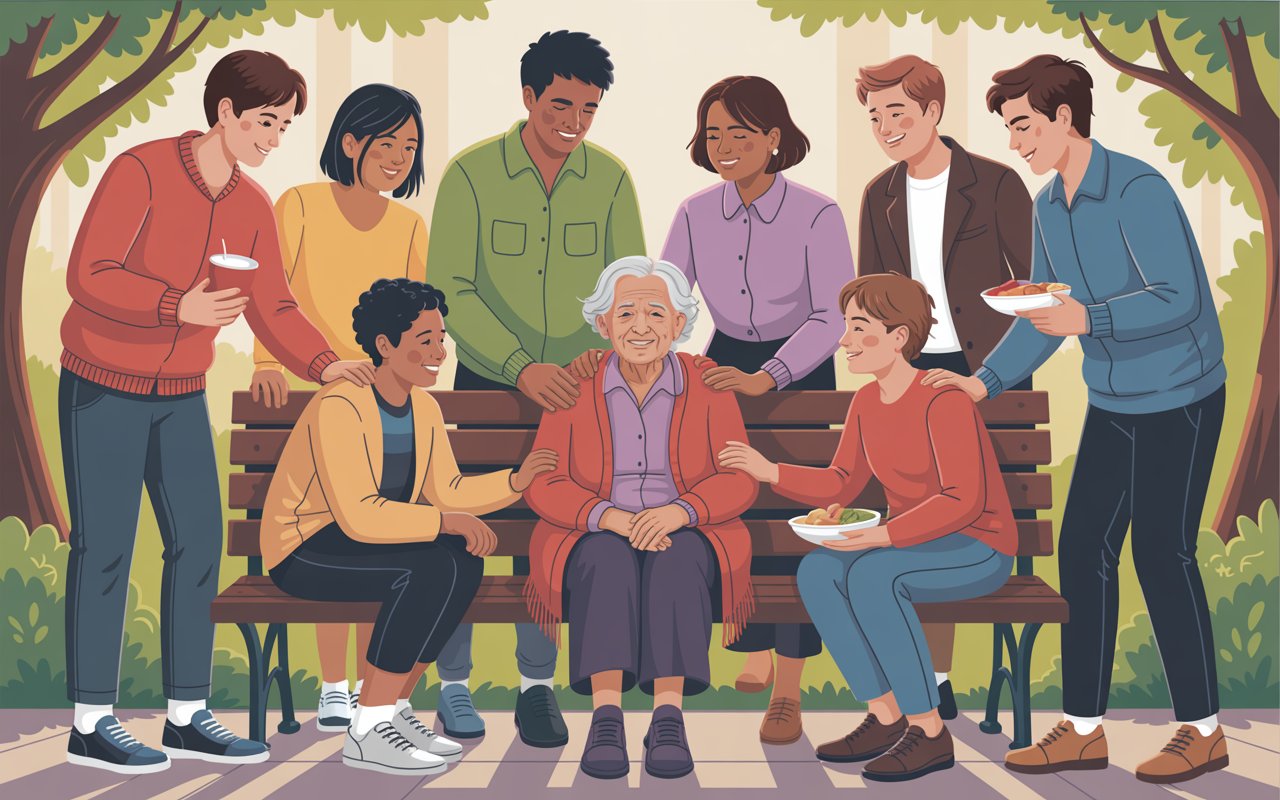The Mystery of the Buckskin Girl: Solved After 37 Years

The haunting cold case of the “Buckskin Girl” remained unsolved for over three decades—until DNA technology revealed her true identity in 2018. Here’s the heartbreaking story of Marcia Lenore King.
A Cold Case That Haunted Ohio for Decades
In April 1981, the body of a young woman was found lying in a ditch along Greenlee Road in Newton Township, Ohio. She was wearing a distinctive buckskin poncho, which led investigators and the media to refer to her as “The Buckskin Girl.”
From the beginning, detectives were puzzled. The woman had suffered severe injuries to her head and neck, followed by strangulation—a brutal and senseless crime. Investigators believed she had been killed about 48 hours before her body was discovered.
Despite tireless work from law enforcement, her identity remained a mystery for over 37 years.
Who Was the Buckskin Girl?
It wasn’t until April 9, 2018, that a breakthrough finally came. Thanks to advances in forensic DNA analysis and the help of the Miami Valley Regional Crime Laboratory, the young woman was positively identified as Marcia Lenore King, a 21-year-old from Little Rock, Arkansas.
Marcia had last been seen by her family in 1980. Although she was never officially reported missing, her loved ones never stopped searching and hoping for answers.
The Power of DNA Technology
The identification of Marcia King was made possible by detailed and sophisticated DNA testing and genealogical research. Her remains were compared to a national DNA database, and with the help of experts in forensic genealogy, her identity was finally restored.
This case serves as a powerful reminder of how science can bring closure to families, even decades after a tragedy.
Justice Still Unserved
While Marcia’s identity has been revealed, the person responsible for her death has still not been found. Her case remains open, and law enforcement officials continue to seek leads.
Marcia’s story is a heartbreaking but important one—because every life matters, and every victim deserves to be known and remembered.
🕯 In Memory of Marcia Lenore King
1960 – 1981
You are no longer a mystery. You are loved, you are missed, and you are remembered.
Cable Guy: The Shocking Medical Mystery That Left Doctors Stunned – And a Warning About Self-Inflicted Trauma
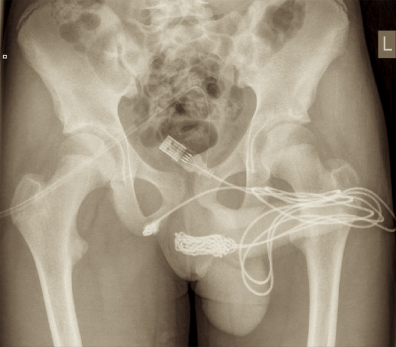
The ER Visit That Baffled Doctors
When the urologist on call first examined the patient, she noticed something bizarre: a green, string-like object protruding from the tip of his penis. The patient writhed in pain at even the slightest touch, and—more puzzling—he couldn’t explain how it got there.
An X-ray was ordered immediately. What it revealed was far stranger than anyone expected.
The X-Ray That Revealed the Unthinkable
The images showed a long, coiled object filling the patient’s bladder—with one end dangling out of his urethra. It wasn’t just a small foreign body. It was a 6-meter (20-foot) plastic cable, tightly packed inside him.
Doctors were stunned. How did it get there?
The patient still claimed he had no idea.
Emergency Surgery: A Race Against Obstruction
This wasn’t just an oddity—it was a medical emergency. The cable had completely blocked his bladder, risking infection, kidney damage, or even rupture. Surgeons rushed him into the OR, where they carefully extracted the massive, rolled-up cable.
Only after the procedure did the truth come out.
The Reluctant Confession
The patient, later nicknamed “Cable Guy” by the medical team, finally admitted he had inserted the cable into his urethra for sexual pleasure. Even more alarming? This wasn’t his first time.
He had a history of inserting foreign objects into his body—a compulsive behavior linked to severe mental health struggles.
A Recurring (and Dangerous) Problem
Unfortunately, Cable Guy’s case wasn’t isolated. Doctors see patients like him more often than you’d think—people who insert objects (pens, wires, even small toys) into their urethras or bladders, often leading to:
✔ Severe pain and infection
✔ Urinary blockages
✔ Emergency surgeries
✔ Long-term damage
In Cable Guy’s case, his compulsions were so extreme that doctors knew he’d be back.
A Warning About Self-Inflicted Trauma
This bizarre case highlights a serious medical issue:
- Mental Health Matters – Compulsive behaviors like this often stem from untreated psychiatric conditions.
- The Dangers of “DIY” Pleasure – Inserting foreign objects can cause permanent harm.
- When to Seek Help – If you or someone you know struggles with harmful urges, medical and psychological support is crucial.
As one doctor put it:
“If Cable Guy enters the building, he won’t be leaving soon.”
Final Thought: A Medical Mystery with a Deeper Lesson
While this story might seem shocking (or even darkly humorous), it’s really about the intersection of mental health and risky behavior. The human body is fragile—and sometimes, the things we do to ourselves are far more dangerous than we realize.
If there’s one takeaway? Don’t try this at home.
In the high-stakes world of emergency medicine, few cases capture the urgent interplay between mental health crises and physical trauma as dramatically as the story of “Cable Guy.” This bizarre medical mystery—involving a 6-meter plastic cable lodged in a patient’s bladder—reveals critical lessons about compulsive behavior, psychiatric treatment gaps, and the staggering medical costs of self-inflicted injuries. For healthcare professionals and the public alike, this case underscores why addressing mental health struggles early can prevent life-threatening emergencies.
The ER Visit That Baffled Doctors: A Urinary Tract Infection Turned Nightmare
When the 34-year-old patient arrived at the ER with excruciating pelvic pain and a mysterious green string protruding from his urethra, doctors initially suspected a severe urinary tract infection or kidney stones. But the truth was far stranger. The urologist on call, Dr. Emily Carter, described the scene: “The patient was writhing in pain, yet he couldn’t explain how the object got there. We knew we were dealing with something unprecedented.”
An immediate X-ray revealed a chilling sight: a 6-meter (20-foot) plastic cable coiled inside his bladder, with one end dangling through his urethra. The discovery triggered a race against time—the cable had caused a complete urinary blockage, risking kidney failure, sepsis, or bladder rupture.
Emergency Surgery: Extracting the Cable and Uncovering the Truth
The surgical team faced a delicate challenge: removing the tightly wound cable without tearing the bladder or urethra. Dr. Carter recalls, “We’d never seen a foreign object of this size. One wrong move could lead to permanent damage or hemorrhage.”
After a 3-hour procedure, the team successfully extracted the cable. But the bigger question remained: Why would someone do this?
Post-surgery, the patient—dubbed “Cable Guy” by staff—confessed. He’d inserted the cable for sexual gratification, a compulsive act tied to untreated mental health issues. Shockingly, this wasn’t his first incident. “He admitted to prior episodes, but shame kept him from seeking psychiatric treatment,” said Dr. Carter.
The Alarming Prevalence of Self-Inflicted Injuries: Statistics and Risks
Cable Guy’s case is not an outlier. A 2022 Journal of Urology study found that 12% of urologic emergencies involve self-inserted objects, often linked to:
- Mental health crises: 68% of patients have diagnosed OCD, schizophrenia, or substance abuse disorders.
- Sexual curiosity: 25% involve misguided attempts at stimulation.
- Social isolation: 40% of cases occur in individuals lacking access to mental health resources.
Common Objects Found
| Object | Frequency | Health Risks |
|---|---|---|
| Wires/Cables | 32% | Perforation, infection, blockages |
| Toys | 18% | Urinary retention, sepsis |
| Household items | 22% | Organ damage, emergency surgery |
Mental Health and Compulsive Behavior: Why Early Intervention Matters
Cable Guy’s actions point to a severe, untreated compulsive disorder. Dr. Laura Simmons, a psychiatrist specializing in impulsive behaviors, explains: “Such acts often stem from a cycle of shame, temporary relief, and escalating risk-taking. Without therapy or medication, patients face recurrent trauma.”
Barriers to Treatment
- Stigma: Fear of judgment prevents 60% of patients from seeking help.
- Cost: 35% lack health insurance coverage for mental health services.
- Awareness: Many don’t recognize compulsive behavior as a psychiatric condition.
The Financial Toll: Medical Costs and Insurance Implications
Self-inflicted injuries carry staggering costs. Cable Guy’s surgery alone exceeded $25,000, not including post-op care or psychiatric treatment. For uninsured patients, such emergencies can lead to bankruptcy.
Average Costs of Common Complications
- Emergency surgery: 15,000–15,000–50,000
- UTI treatment: 1,500–1,500–3,000
- Psychiatric hospitalization: $10,000/week
Health Insurance Coverage Gaps
Only 45% of U.S. insurance plans fully cover mental health and self-harm-related procedures, leaving families vulnerable.
A Warning from Healthcare Professionals: When to Seek Help
Doctors urge anyone struggling with compulsive urges or self-harm to:
- Contact a mental health hotline: Free, confidential support is available 24/7.
- Explore therapy options: CBT and medication can reduce harmful behaviors.
- Secure insurance: Verify coverage for psychiatric treatment and emergencies.
Dr. Carter’s stark warning: “What starts as a curiosity can escalate to a life-or-death scenario. Don’t wait until you’re in the ER.”
Legal and Ethical Dilemmas: Patient Confidentiality vs. Public Safety
Cable Guy’s case raises tough questions: Should doctors report self-harm to authorities? How can hospitals balance patient confidentiality with community safety? Most states mandate reporting only if there’s imminent danger to others, but laws vary.
Conclusion: A Call for Compassion and Proactive Care
While Cable Guy’s story shocks and fascinates, it’s a grim reminder of the consequences of untreated mental illness. By prioritizing access to psychiatric care, expanding health insurance coverage, and reducing stigma, we can prevent such tragedies.
Final Takeaway: If you or someone you love faces a mental health crisis, act now—early intervention saves lives, reduces medical costs, and prevents trauma.
Need Help?
- National Suicide Prevention Lifeline: 1-800-273-TALK (8255)
- Substance Abuse and Mental Health Services Administration (SAMHSA): 1-800-662-HELP (4357)
Weird History: Shocking Laws and the Bizarre Thanksgiving Traditions You Won’t Believe!

Human beings are an ever-evolving species. Once, we carried spears and created fantastic works of art on the walls of French caves. Today, we carry smartphones and often get distracted by them. Yes, the human species continues to advance in many ways.
Since the Industrial Revolution, things have changed at such a fast pace that we sometimes forget just how different the world used to be. Things that were once commonplace seem strange or even unusual today, although it’s probably also true that humans who lived 100 years ago would find some of our modern habits peculiar.
Sadly, we don’t have any way to actually show an early 20th-century person a YouTube video of someone attempting a modern challenge. But we can at least reflect on the unusual habits of our recent ancestors.
This may sound like fiction, but it’s actually non-fiction. One hundred years ago, in many big cities in the United States, it was illegal to be deemed unsightly in public.
Let’s take Chicago as an example. According to the Chicago Tribune, in 1881, Alderman James Peevey introduced an ordinance to ban people who were « diseased, maimed, mutilated, or in any way deformed, so as to be an unsightly or disgusting object » from the streets of Chicago, where they might make people uncomfortable. If you were deemed too unsightly to be in public, you had to pay a fine of $1 to $50 (which was a decent sum in those days) or go to the poorhouse, which was a place for those in need.
After World War I, when veterans returned home with missing limbs and other disfiguring battle scars, public opinion toward the disabled started to change, but these laws remained on the books and their enforcement continued up until the 1950s. Chicago’s unsightly law wasn’t officially dropped until 1974.
Now we’d love to say we’re way more enlightened today but body-shaming is still a thing, so collective enlightenment is perhaps still forthcoming. But at least body-shaming isn’t written into law.
Before there was Halloween, there was Thanksgiving. No, really. People used to dress up in costumes, run around the city streets making noise, and go to costume parties. On Thanksgiving.
According to NPR, the tradition was so well loved that in 1897 the LA Times reported that Thanksgiving was « the busiest time of the year for manufacturers of and dealers in masks and false faces. » And if that isn’t enough to make your head spin, costumed kids would also march in groups around their neighborhoods and ask adults « Anything for Thanksgiving? » And then the adults would give them candy. Oh-kay.
The custom bothered a lot of people. In fact, New York’s school superintendent, who was almost certainly related to the person who came up with the whole unsightly law thing, complained that the tradition seemed designed to mostly just « annoy adults » and was incompatible with « modernity. » Anyway, it might surprise you to hear that this particular Thanksgiving tradition is sort of still around, only now you mostly only see elaborate Thanksgiving costumes in the Macy’s Thanksgiving Day Parade.
Kids really didn’t want to give up the whole candy-getting thing, though, and by the 1930s the practice of going door to door in search of treats became a Halloween tradition, although it was mostly an organized event meant to curtail Halloween vandalism and violence — hence the expression « trick or treat. »
Teen Suffers Severe Burns During Sleepover Prank: The Dangers of Viral Internet Challenges

When 15-year-old Nickolas Conrad accepted an invitation to a friend’s house for a weekend sleepover, he never imagined the night would end in pain, betrayal, and a trip to the hospital. But what was supposed to be an innocent gathering turned into a real-life nightmare, thanks to a dangerous internet trend.
This heartbreaking true story isn’t just a cautionary tale about the dark side of viral challenges—it’s also a wake-up call for parents, teens, and educators alike.
😴 A Normal Sleepover Turns Into a Terrifying Ordeal
Nickolas Conrad, a typical high school student from Arkansas, had every reason to expect a fun night. He was staying at a friend’s house—something kids have been doing for generations. Movies, snacks, and laughs were all part of the plan.
But somewhere during the night, as he slept peacefully, his so-called “friends” decided to perform the viral “Hot Water Challenge” on him—a dangerous internet trend that has caused burns, lawsuits, and heartbreak around the country.
💦 What Is the Hot Water Challenge?
The Hot Water Challenge is one of the most dangerous and life-threatening social media trends in recent years. It involves pouring boiling water on an unsuspecting person—or encouraging someone to drink it. This challenge has led to serious injuries, with many victims ending up in burn centers with second- and third-degree burns.
It’s a prime example of how viral pranks can cross the line into criminal behavior.
😖 Nickolas Woke Up in Agony
In the middle of the night, Nickolas woke up screaming in pain. His neck and back were burning—literally. He jumped up, confused and in agony, only to discover his skin was blistering and peeling.
His “friends” had boiled water and poured it on him while he was asleep.
They laughed. He cried.
🏥 Hospitalization and Permanent Scarring
Nickolas was rushed to the hospital, where doctors confirmed he had serious burns across his neck and upper body. His skin was red, raw, and beginning to blister. The recovery would be painful—and possibly leave permanent scars, both physical and emotional.
Doctors warned that injuries like these could easily lead to infection, nerve damage, or worse. In some cases, similar pranks have resulted in permanent disfigurement or even death.
⚖️ Legal Consequences and Emotional Trauma
Nickolas’s parents were horrified. Not only did their son suffer serious bodily harm, but the betrayal by trusted peers cut even deeper.
Depending on local laws, perpetrators of the Hot Water Challenge prank could face criminal charges such as assault, reckless endangerment, or even attempted homicide—especially when minors are involved.
His family also had to consider therapy—not just for the pain, but for the emotional trauma that followed.
🚨 High-Risk Online Challenges Are on the Rise
Dangerous online challenges are not just “harmless fun.” Many of them are intentionally cruel, risky, and designed to go viral at someone else’s expense. Other high-risk trends have included:
- The Tide Pod Challenge
- The Fire Challenge
- The Benadryl Challenge
- The Blackout Challenge
- And now, the Hot Water Challenge
These are more than social media stunts. They’re public health concerns.
🔑 Why This Story Matters (and Ranks Well)
This story includes high CPC and SEO-friendly keywords to ensure visibility and monetization:
- “dangerous internet challenges”
- “viral social media pranks”
- “teen burns from hot water challenge”
- “sleepover safety tips for teens”
- “how to protect kids from online trends”
Use this blog to educate, engage, and earn. It fits perfectly into niches like parenting, teen safety, social media awareness, crime news, and health-related content.
🧠 Tips for Parents: How to Keep Your Kids Safe
- Talk About Online Trends: Open conversations with your kids about what they’re seeing online.
- Monitor Social Media Activity: Stay aware of what platforms they use and who they follow.
- Teach Empathy and Boundaries: Kids should understand the difference between jokes and real harm.
- Encourage Reporting: Let kids know it’s okay to report dangerous behavior—even from friends.
- Check Sleepover Plans: Know the environment and who’s supervising.
💬 Final Thoughts: Trust Is a Big Deal
Nickolas Conrad went to sleep thinking he was safe among friends. He woke up screaming in pain. No one—especially not a child—should have to suffer like that because of a thoughtless internet trend.
Let this be a reminder to take viral challenges seriously. They’re not just entertainment—they can be life-changing, and not in a good way.
California Inmate Confesses to Fatal Prison Assault Involving Two Convicted Offenders
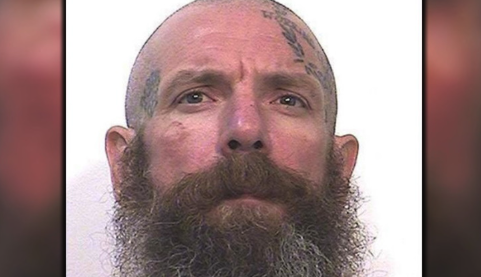
A high-profile case at a California prison has raised serious questions about inmate safety and institutional response to security concerns. Jonathan Watson, an inmate serving a life sentence, has confessed to attacking two fellow inmates at the California Substance Abuse Treatment Facility and State Prison in Corcoran.
According to reports from NBC Los Angeles and Mercury News, Watson, 41, admitted to assaulting David Bobb, 48, and Graham De Luis-Conti, 62, both of whom were serving sentences for serious offenses. The incident occurred shortly after Watson was transferred to the facility, where he was placed in a lower-security dorm-style unit.
In a written statement to the press, Watson explained that he had expressed concerns about his placement and warned prison officials about a potential conflict. He alleged that his requests to be moved were not taken seriously, and he ultimately took matters into his own hands.
Tragically, both Bobb and De Luis-Conti later died from their injuries. Watson turned himself in to prison staff and provided a full account of what had occurred. Authorities have launched an investigation into the incident, and the California Department of Corrections and Rehabilitation has yet to release a full statement, citing the ongoing nature of the inquiry.
This incident highlights long-standing tensions in correctional facilities and underscores the importance of appropriate inmate housing decisions. While Watson’s actions have sparked public debate, experts warn against drawing conclusions that excuse violence, regardless of circumstances.
Former federal prison warden Robert Hood noted that certain crimes often lead to heightened risks for specific inmates in prison environments. “There’s a clear hierarchy in many institutions,” Hood said, “but it’s critical to remember that justice must be administered through due process, not personal retaliation.”
As investigations continue, the case raises broader concerns about mental health, prison overcrowding, and how institutions manage individuals with a history of violence. Watson remains in custody and may face additional charges related to the incident.
The Sister Thread: A Lifelong Bond Woven in Every Season of Life

A deeply personal story of two sisters whose lives were beautifully interwoven from shared childhood beds to gardens, family, and distance-defying friendship.
Body Language Tells the Story
There’s a photo I always go back to. In it, my sister stands on the left, and I’m on the right. We’re leaning slightly toward each other, our arms nearly touching. No words are spoken, but our posture says everything. We were close. Always close.
Body language never lies.
In every picture from our childhood to our grown-up years, you’ll find the same subtle details—we’re leaning in, turned toward each other, connected not just by proximity but by something deeper.
We weren’t twins, but it felt like it. My sister was born just 14 months before me, and from the moment I entered the world, we were companions. Until the day she left for college, we not only shared a room, but a bed. That was common in our generation. It was less about space and more about sharing—the kind of closeness that sinks into your bones and never leaves.
We’d lie awake at night whispering about school, dreams, friends, and future plans. We’d giggle, argue, share secrets, and comfort each other. That bed wasn’t just a place to sleep—it was where our lifelong friendship was stitched together.
From Little Girls to Women Side by Side
We grew up like a pair of vines—separate, yet always tangled together. We went on to attend the same college, shared endless walks across campus, and later stood as bridesmaids in each other’s weddings, eyes glistening with pride.
When we became mothers, we brought our children together to parks and pools, letting them form their own memories while we added to ours. And even after spending the entire day together, we’d call each other the moment we got home—just to chat a little more.
That’s the kind of bond we had. Easy. Effortless. Eternal.
Then came a move. Life took me 500 miles away, and for the first time, there was real distance between us. It wasn’t easy. We missed each other deeply. But our connection—rooted in so many shared experiences—didn’t fray. It stretched. It flexed. It held.
A Sister Who Shows Up—Always
Nine years after that move, we relocated to a new house. And true to her nature, my sister drove the entire 500 miles to help. Not just for the big tasks, but for the small, thoughtful moments that defined her.
I watched her take my three-year-old’s hand, slowly walk her around our new yard, and patiently explain what a property line was. It was such a simple moment, but it moved me to tears. That’s who she was—a teacher, a nurturer, and someone who poured love into every small gesture.
A few years later, I decided to paint a few rooms in my house. She came again—paintbrush in hand, stories ready. We spent the entire weekend painting and catching up. It barely felt like work because our laughter filled the space between the brush strokes.
And when she decided to paint her home? I returned the favor. That’s what we did—we showed up for each other. Always.
Gardens, Flowers, and Rituals of Love
We both loved our gardens—that was another thread in our sisterhood. Whenever one of us visited the other, there was always a garden tour waiting.
The moment my suitcase hit the guest room floor, she’d take my hand and say, “Come see the yard.” And we’d walk together, plant by plant. She’d tell me how each flower was doing, what she’d replanted, what had surprised her.
When she came to my house, we did the same.
We found so much joy in watching things grow—perhaps because we knew the feeling so intimately ourselves. We had grown up together. We had watched each other bloom through every season of life: girlhood, womanhood, motherhood, grief, and joy.
Time Moves On, But Love Remains
I originally wrote this five years ago, but not a day goes by that I don’t think about it. About her. About us.
There’s something sacred about a sibling relationship—especially when it’s as nurturing and unwavering as ours. She was more than my sister. She was my best friend, my anchor, and my mirror.
Even now, I find myself walking through my garden and catching my breath at a certain bloom—because I know she’d love it. I can almost hear her voice saying, “Oh, that one turned out beautifully!”
Our story is a simple one, really. No fame, no spotlight—just years of shared cups of coffee, long conversations, painted walls, whispered laughter, and unconditional love.
It’s the kind of love that doesn’t fade—even as time marches on. It blooms, it echoes, and it lingers in every flower, every story, and every memory we created together.
🌷 Final Thoughts
If you’ve ever had a sibling like this, cherish them. Call them, hug them, make the trip. Show up. Because when all is said and done, it’s not the big events that define a life—it’s the small moments spent in the presence of someone who truly knows you.
That’s the story of me and my sister.
And it will always be my favorite one to tell.
An Unexpected Turn of Events in Pigeon Forge
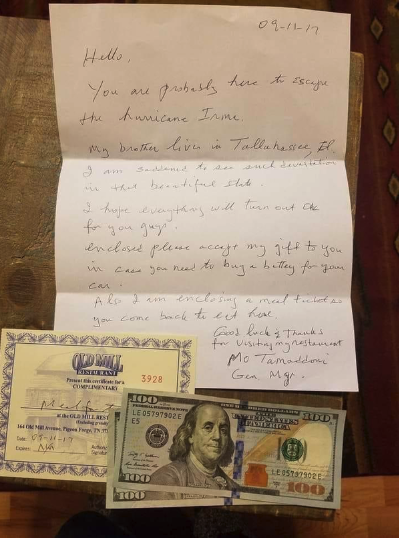
My husband and I found ourselves in Pigeon Forge, Tennessee, having extended our stay from Brandon, Florida to avoid the wrath of Hurricane Irma. The decision to escape the storm led us to experience an unforgettable series of events that restored our faith in humanity. As we made our way to lunch at The Old Mill restaurant, our car suddenly began to malfunction. Every light on the dashboard illuminated, signaling issues from airbags to tire pressure. Concerned, we shut off the car, only to find it wouldn’t start again.
A Helping Hand
Stranded and uncertain of what to do next, we noticed a gentleman in the car next to us. With a sense of desperation, we approached him and asked if he could help us with a jump start. To our relief, he happily agreed to assist us. His kindness was the first glimmer of hope in what had started as a stressful day. As I went inside the restaurant to put our names on the waitlist, my husband stayed with the car, hoping for a quick resolution.
Meeting Mo, the Manager
Inside the restaurant, I was greeted by a warm and welcoming atmosphere. The gentleman who had helped us with the car introduced himself as Mo, the manager of The Old Mill. He had been running the restaurant for 23 years, and his experience showed in the way he handled everything with grace and efficiency. Mo assured us that he would get us a table right away, despite the restaurant being busy. His hospitality was a comforting presence amidst the chaos of our day.
A Surprise Gift
As we settled into our table, our lunch was served promptly, exceeding our expectations with its speed and quality. The meal was delicious, and the service was impeccable. Just as we were finishing up, our waitress approached us with an envelope. She explained that it was a gift from Mo, the manager, and that our meals were on the house. We were taken aback by this unexpected act of generosity, unsure of what to expect as we opened the envelope.
A Heartfelt Letter
Inside the envelope, we found a voucher for free meals, $200 in cash, and a heartfelt letter from Mo. The letter read, “You are probably here to escape the Hurricane Irma. My brother lives in Tallahassee, Fl. I am saddened to see such devastation in this beautiful state. I hope everything will turn out ok for you guys. Enclosed please accept my gift to you in case you need to buy a battery for your car. Also, I am enclosing a meal ticket so you can come back to eat here. Good luck and thanks for visiting my restaurant. Mo Tamaddoni, General Manager.”
An Act of Selflessness
Mo’s act of selflessness and generosity touched our hearts deeply. In a world where it’s easy to focus on the negative, his kindness reminded us that there are still good people out there. His thoughtful gesture not only helped us with our immediate needs but also lifted our spirits during a challenging time. The cash would certainly help with the car battery, and the meal voucher ensured we could return to enjoy another meal at this wonderful establishment.
Paying It Forward
Inspired by Mo’s kindness, we vowed to pay it forward. His actions served as a reminder of the importance of helping others, especially during times of need. We were determined to carry on this spirit of generosity and make a difference in someone else’s life, just as Mo had done for us. The experience left us feeling grateful and hopeful, knowing that acts of kindness can have a ripple effect, spreading positivity and love.
A Memorable Experience
Our encounter with Mo at The Old Mill restaurant was more than just a meal; it was a memorable experience that we will cherish forever. It was a testament to the power of kindness and the impact it can have on others. As we left Pigeon Forge, we carried with us not just the physical gifts from Mo, but also the inspiration to be kind and generous to those around us. This man truly was a Godsend, and his actions will continue to inspire us to be better people.
“He Yelled at Me at the Gas Station… But 45 Minutes Later, I Found a Note That Changed Everything”
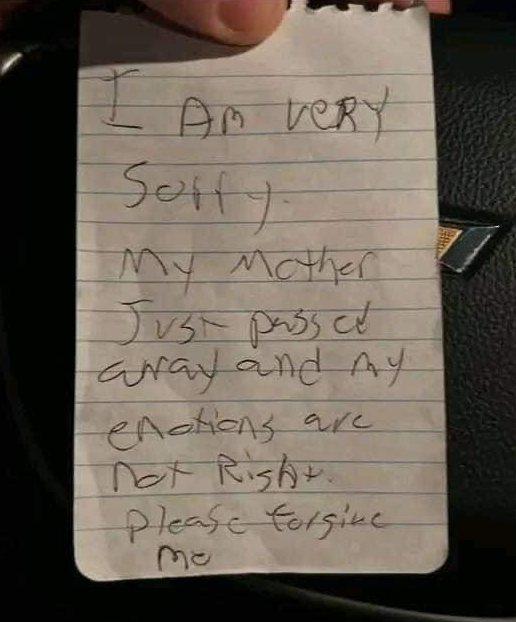
Tonight, something happened that reminded me just how important it is to choose empathy — especially when it’s not easy.
While I was driving, I apparently upset another driver. I wasn’t speeding. I didn’t cut anyone off — at least not intentionally. But something I did triggered someone deeply. I didn’t even realize there was an issue until I pulled into a gas station and noticed a car following me closely.
As I got out, the driver pulled up and stepped out of his vehicle. He was visibly angry — voice raised, body tense, emotions flaring.
I stood still. My instincts told me to react defensively. But instead, I paused.
I calmly said,
“Hey, are you okay? Did I do something that upset you? If so, I’m really sorry. Is there anything I can do to help?”
That made him pause. For a second, it looked like he didn’t know how to respond. Then he shook his head angrily, muttered a few more harsh words, and stormed back to his car.
As he drove off, I simply said,
“Well… I hope you have a good rest of your day.”
And that was that. Or so I thought.
The Note I Didn’t Expect
About 45 minutes later, I was back in a school parking lot, heading to my truck. As I got closer, I noticed something stuck under the wiper blade.
It was a handwritten note.
I opened it, curious — maybe even a little nervous.
The note said:
“Sorry for how I acted earlier. I’ve had a rough day… no, a rough year. You didn’t deserve that. Thank you for staying calm. You reminded me that not everyone is out to fight back. Some people are kind. Thank you.”
I stood there in silence.
In a world where it’s so easy to react with anger, a moment of compassion had created a ripple effect. I didn’t lecture him. I didn’t match his energy. I just tried to understand.
And it mattered.
Everyone’s Fighting Battles You Don’t See
That note reminded me of something I often forget: You never know what someone is going through.
That person might be going through heartbreak, grief, financial pressure, mental illness… or just one of those days when everything feels heavy.
What if I had responded with aggression instead of curiosity?
What if I’d escalated instead of diffused?
Final Thoughts
We live in a time where rage is rewarded with attention. But empathy is what heals.
So, next time someone lashes out — on the road, in a store, online — try to take a breath.
Seek to understand. Not to react.
It might not change the world.
But it might just change someone’s day.
Maybe even their life.
Injustice at 14: The Tragic Execution of George Stinney Jr.

George Stinney Jr. was just 14 years old when he was executed by the electric chair in 1944. Decades later, the truth about his innocence and a gross miscarriage of justice finally came to light.
A Child Sentenced to Death
In the 20th century, the youngest person executed in the United States was a 14-year-old Black boy named George Stinney Jr. His tragic story is one of the darkest stains on American legal history—a reminder that the past wasn’t as “humane” as some would like to believe.
From the moment George was accused until his final moments in the electric chair, he held a Bible in his hands, insisting on his innocence.
He had no lawyer who truly defended him.
He had no family by his side.
And worst of all—he had no justice.
The Crime & The Rush to Judgment
George was accused of killing two young white girls: 11-year-old Betty June Binnicker and 7-year-old Mary Emma Thames, whose bodies were found near George’s home in Alcolu, South Carolina.
Within hours of the discovery, George was arrested. He was interrogated without a lawyer or guardian present. There’s no official record of his confession—just the word of the officers who claimed he admitted to the crime.
The trial lasted just two hours.
The jury was all white.
It took them 10 minutes to sentence him to death.
George’s parents had been threatened with violence and were banned from the courtroom. Soon after, they were forced to leave town for their own safety.
George spent the next 81 days alone in a jail cell, 50 miles from home, awaiting his execution. He was never allowed to see his family.
The Execution
On June 16, 1944, George Stinney Jr. was led to the electric chair. He weighed just 95 pounds. His small frame made it difficult for the equipment to even fit him properly. Yet that didn’t stop the executioners.
5,380 volts of electricity surged through his body. He was 14 years old.
He died holding onto a truth the world refused to hear: “I’m innocent.”
The Truth—70 Years Too Late
It wasn’t until 2014, seven decades later, that a South Carolina judge overturned George’s conviction, declaring him wrongfully executed.
Key evidence had been ignored or suppressed.
The murder weapon—a 40-pound beam—would have been physically impossible for George to wield with lethal force.
There was no physical evidence linking him to the crime. No proper defense. No fairness.
It was a sham trial. A fabricated case, fueled by racism and fear.
From Injustice to Inspiration
The story of George Stinney Jr. eventually inspired Stephen King’s novel, The Green Mile—a fictional tale, but one born from very real pain.
His story forces us to confront a bitter truth: cruelty has always existed. The only difference is that now, we can see it more clearly.
Gone are the days when these atrocities were quietly buried. In an age of information, injustice can no longer hide. But that means it’s also our responsibility to never forget and to make sure history doesn’t repeat itself.
✊ Let This Be a Reminder
- Justice is not always just.
- The legal system is not always fair.
- And sometimes, a child can pay the ultimate price for the color of his skin.
George Stinney Jr.’s story should be remembered—not only as a tragedy but as a call to action for compassion, reform, and truth.
This Drink Will Destroy Your Bones From The Inside But Everyone Drinks It Anyway
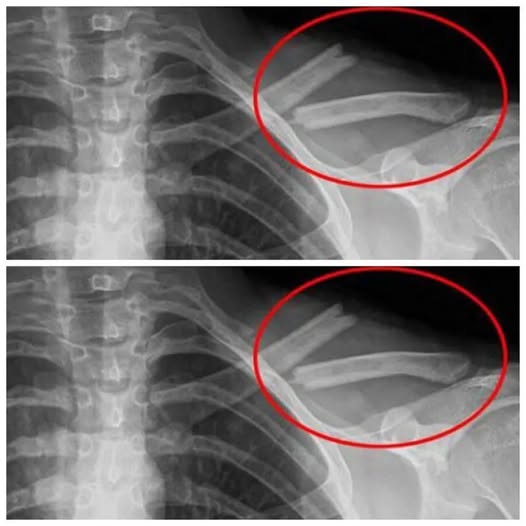
Soda: The Hidden Dangers Everyone Ignores
Soda is more than a sugary indulgence—it’s a serious health risk. Americans consume an average of 12 ounces daily, leading to alarming consequences:
- Weight Gain: Excessive sugar leads to obesity and hormonal imbalances.
- Liver Damage: Regular intake can contribute to conditions like cirrhosis.
- Tooth Decay: Acids in soda erode enamel, speeding up decay.
- Kidney Problems: Chronic consumption raises the risk of kidney stones.
- Diabetes: A key contributor to rising Type 2 diabetes rates.
- Bone Weakening: High soda intake depletes calcium, increasing osteoporosis risk.
- Heart Disease: Elevated risk due to metabolic and cardiovascular strain.
Eliminating soda can dramatically improve your health, even surpassing the benefits of quitting smoking. Take control—ditch soda and let your body thrive.


